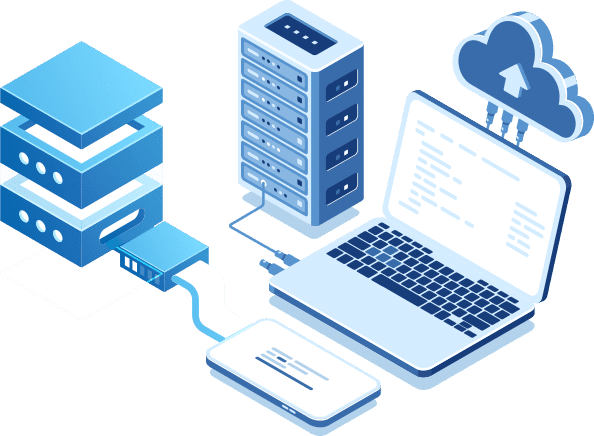To continue in business sometimes
becomes a matter of concern for the organizations. This is because of the
number of threats that are rising daily. The organizations must come up with
various data backup and recovery methods. Every organization must have a BCDR
(Business Continuity and Disaster Recovery) solution. Having a BCDR solution
will help the organizations to deal with cyber-attacks on their sensitive data
over a network. One of the most extensively used cyberattack tools is a
ransomware attack. So, to prevent it, the companies should use best practices
related to data backup and disaster recovery.
Organizations suffering from Downtime
may have to suffer data losses which can go even beyond the recovery cost.
Downtime can abruptly stop a business. It can lead to customer loss, as the
customer will not want to continue the services further due to dissatisfaction.
Downtime will affect the reputation of the organization. If the company fails
to deliver reliable data protection to the users, it will undoubtedly have to
pay penalties. All in all, the Downtime will have a negative impact on the
revenue and productivity of the company.
So, to secure themselves from all the
issues as mentioned above, it is recommended that the companies should follow
some set of rules and regulations for securing the data, productivity and
business revenue altogether. They will have to move on from the traditional
backup methods to advanced methods for securing the data so that they can avoid
uncertain disasters. The companies should be familiar with cybersecurity
services and BCDR. Both of them are different, but when combined, they will
provide useful results to the organizations.
Data Backup
Practices
The data backup means taking a copy
of the data and placing it on the server from where you can access it whenever
required. It is similar to the process we follow on our devices to take a copy
of any document. In the devices, you surely would have seen the data backup
facility which is provided by the handset manufacturers.
Nowadays, instant messaging services
have also started providing data backup facilities. These services take the
backup of your data, be it images shared over the platform or the text, audio,
video, contacts, or messages. You can access the backed-up data whenever
required. If you have taken the backup of your data, you can quickly recover
it, in case your device gets damaged, or the data on your device gets corrupted
due to external malware interference. So, it is recommended that you should
take the backup of your files and folders. This was the case for an individual.
In the case of organizations, there
must be a proper plan about what all steps they should follow, in case there is
an unexpected data loss. There must be data recovery and backup practices that
companies should follow so that they can recover their data if in case any
damage occurs. All the details regarding the product information, client
information, company’s policies, and more should be protected.
Disaster Recovery
Practices
Disaster Recovery is a set of
strategies that are used by the companies so that they can quickly re-establish
access to the data, apps, and resources. A procedure is followed by the company
to deal with the uncertain loss of data or user’s access to a service.
Organizations already keep with them,
a replicated version of their websites or apps. These replicated versions are
called Disaster Recovery websites/apps. If in case there happens to be a tragic
loss of connection between the client and the networks, the organizations can
immediately switch on to their Disaster Recovery plan. The organizations, until
the main data center starts working again, can continue using the other set of
storage systems and servers.
Best Solutions for
Data Backup & Disaster Recovery
The organizations should keep these
factors in mind while opting for both the Data Backup & Disaster Recovery:
- The companies should look for the best
deployment plan for backup and recovery. The companies can choose either a
non-premise or a cloud-based approach. The approach depends upon the
level, nature, and investment of the business. Along with that, there should
be a proper checking of the access speed of the data.
- Several kinds of solutions should be used
while taking backups, like Continuous replications, Tapes, and Snapshot
based backups.
- An organization should practice DraaS
(Disaster Recovery as a Service), which helps the clients to access the
services with minimum disturbances. DraaS acts as insurance for the
organizations who cannot form a secondary site due to investment problems.
In the DraaS, your servers will transparently run in the cloud, and you can
recover the databases, and apps without any losses.
Conclusion
The data backup and disaster recovery
plans are very crucial for organizations in today’s world. Every
individual/organization should practice effective measures to retrieve their
data efficiently and in a fast and reliable way. Similar to the data backup,
disaster recovery practices should be followed by the organizations to get back
on the track as fast as they can so that they can avoid the loss of both
customer and revenue. Both the practices are equally important, and both lead
the industry to proceed in the business securely.
Marshall Lyne is a self-professed security expert; he has been making the people aware of the security threats. His passion is to write about Cyber security, cryptography, malware, social engineering, internet and new media. He writes for Norton security products at norton.com/setup




No comments:
Post a Comment